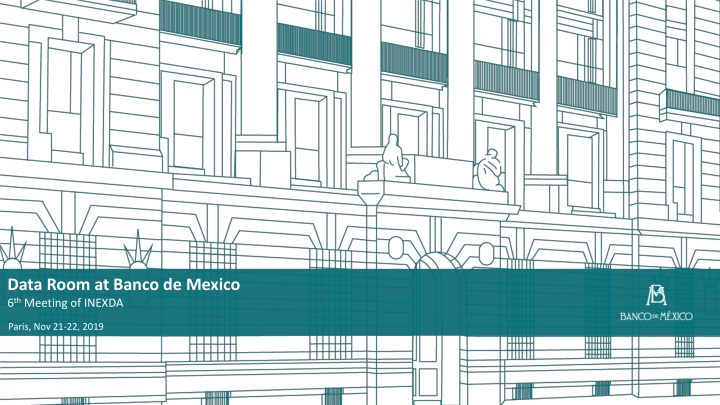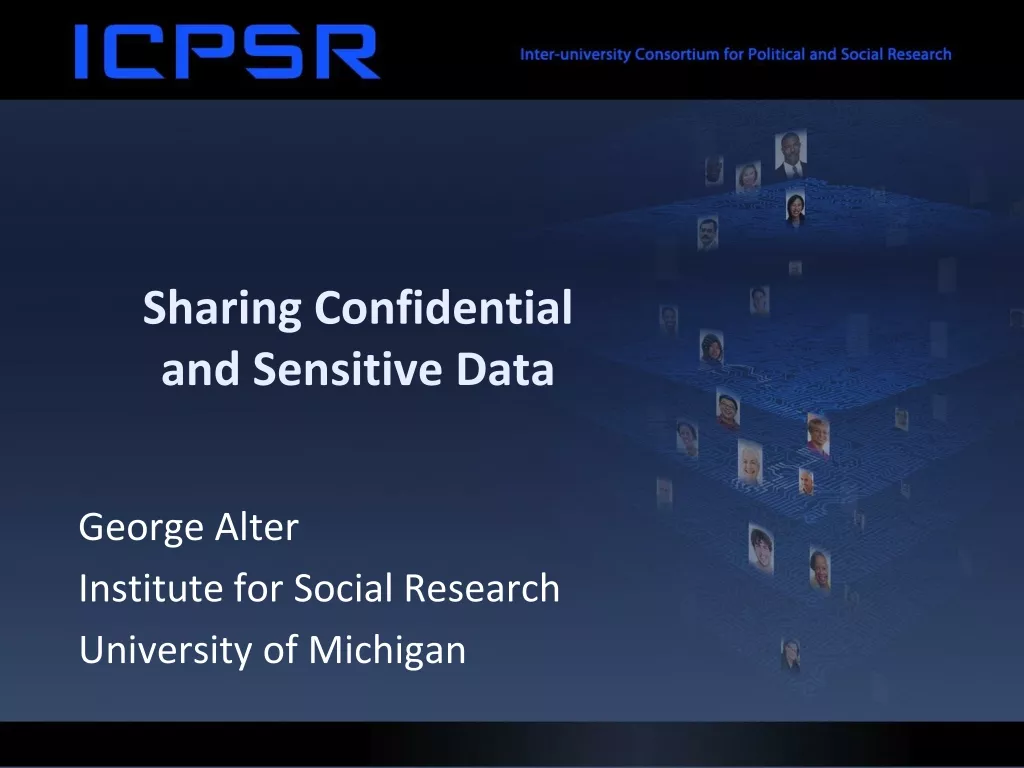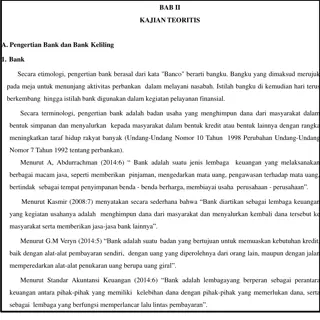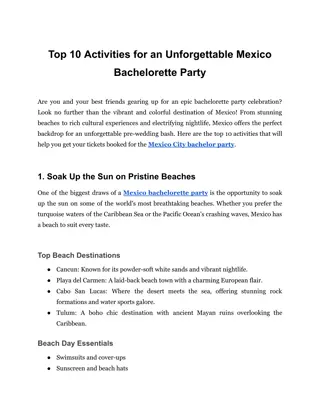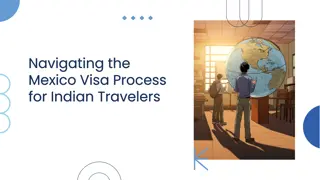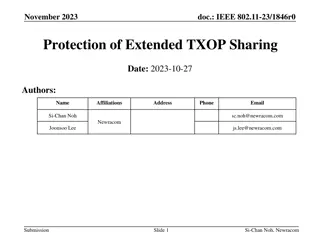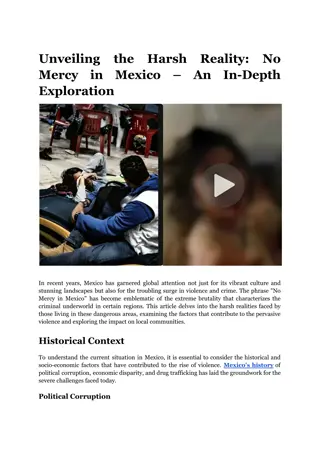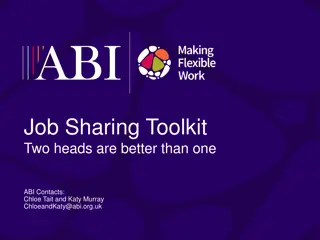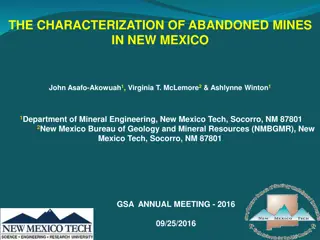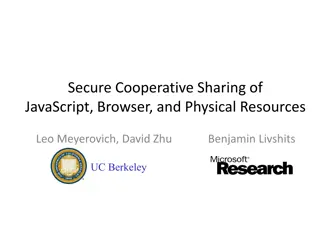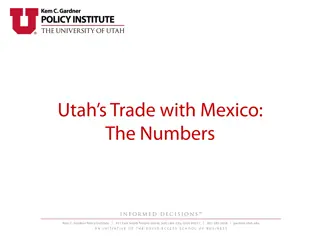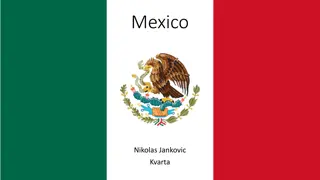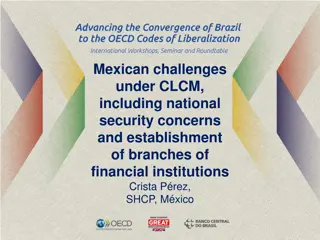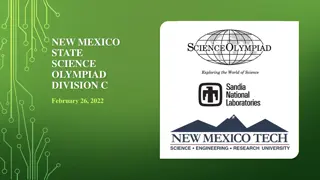Data Room at Banco de Mexico: Enhancing Data Sharing for Economic Research
Banco de Mexico has been gathering granular data on financial transactions since the mid-1990s to monitor compliance, risks, and economic interactions. The creation of a Data Room allows for efficient and secure data sharing, contributing to economic research and analysis. The Economic Microdata Laboratory collaborates with international researchers to foster economic research projects. Specialized users can access microdata resources for in-depth analysis, benefiting from Banco de Mexico's data expertise.
Download Presentation

Please find below an Image/Link to download the presentation.
The content on the website is provided AS IS for your information and personal use only. It may not be sold, licensed, or shared on other websites without obtaining consent from the author.If you encounter any issues during the download, it is possible that the publisher has removed the file from their server.
You are allowed to download the files provided on this website for personal or commercial use, subject to the condition that they are used lawfully. All files are the property of their respective owners.
The content on the website is provided AS IS for your information and personal use only. It may not be sold, licensed, or shared on other websites without obtaining consent from the author.
E N D
Presentation Transcript
Data Room at Banco de Mexico 6thMeeting of INEXDA Paris, Nov 21-22, 2019
Introduction Since mid 1990 s, Banco de Mexico gathers granular data on financial transactions as part of its strategy to monitor regulatory compliance, risks taken by financial institutions, the development of markets and interactions between economic sectors. Furthermore, over the years, Banco de M xico has also gathered economic information for analysis and developed secure schemes to share economic microdata with other government entities. All these developments have allowed the production of statistics and fostered financial and economic research. As a result, microdata has the biggest share in Banco de Mexico s current information model. As the costs of such an information model are high to both the Central Bank that collects it and to reporting institutions, it is important to maximize its social benefits. To better achieve this, it is necessary to broaden the audience to the maximum of its capacity. Therefore, an efficient data sharing scheme is needed. At the same time, it is important to preserve the confidentiality of sensitive data to avoid market distortions or an unlawful use. This would point towards a restricted dissemination. To balance both cases, it is necessary to think in alternative schemes that allow specialized users to have access to data in a secure way, but always fulfilling legal restrictions to disseminate it. A Data Room is a potentially efficient scheme for sharing granular data that fits with these specifications. 2
Why a Data Room? There has been a growing recognition by the international community of expanding and improving information dissemination channels after the International Financial Crisis of 2008-2009. Banco de Mexico considered the creation of a Data Room to share granular data for both internal and external users as a way to facilitate the access to data, increasing its value. Microdata at Banco de Mexico Economic data Financial data Access to specialized users lisf Laboratorio de Informaci n del Sistema Financiero Operating Since 2018 Mainly researchers co-authored with researchers from Banco de Mexico Work in progress Official release 2020 3
Economic Microdata Laboratory of Banco de Mexico (EconLab) is the economic microdata laboratory of Banco de M xico. It has been working formally since 2018 and has more than 20 ongoing research projects, collaborating with institutions such as Harvard University, the University of California, The Federal Reserve Board, and the BIS, among others. The main goal for this laboratory is to foster economic research at the Bank by inviting non-for- profit researchers of the international community to collaborate in projects with Banco de Mexico. 4
EconLab Information resources (microdata) Banco de M xico has numerous databases for different granularities. purposes, several sources and distinct EconLab staff is in charge of cleaning, harmonizing, anonymizing and, if necessary, creating aggregated databases making them friendlier for researchers. Human resources Access to the Bank s specialists of each dataset. The collaboration in a co-authorship scheme with a researcher at Banco de M xico offers access to the time and expertise of both the researcher and his/her research assistants. Technological resources The technological resources that are currently available at the research department can also be made available to external researchers while they are working at Banco de M xico. As of now, the EconLab has access to a server cluster at the Economic Research Virtual Laboratory (LVIE) that allows the execution of heavy routines and/or handling of large data sets. 5
What is the EconLab? Researcher Research Project A research project is required Internal researcher (co-author) Non disclosure agreement Database secure on-site access or sample access Banco de M xico Data bases LVIE Research data bases Secure on site access to servers with high computational power and statistical packages to process data Different purposes (policy, statistics) Several sources Distinct granularities For research purposes External researchers allowed Harmonization Factual anonymization Generate aggregates Cleaning Best practices 6
The Financial System Information Laboratory (LISF) 1. Manage granular data sets to make them accessible and specialized users. Purpose exploitable for Official release: Contribute to expand the analysis and non- commercial research of specialized users, through secure access to large volumes of granular data. lisf Laboratorio de Informaci n del Sistema Financiero 2. confidentiality of the information during the life of the project. Guarantee the security and Functions: 2020 3. Manage the library of information products generatedfrom granular data. 7
Timeline of the LISF I. Implement the pilot test with internal users. II. Implement a strategy to publicize and encourage the use of the first available granular data set to external users (1H-2020). III.Official release 2H-2020. General project planning and budgetary requirements. 2018 2019 2020 2021 I. Design, develop and implement policies, processes and management tools. II. Define and ensure the implementation of the necessary infrastructure. III.Design, develop make available the first granular data sets. I. Continuous improvement. II. Advertising. III.Analysis and evaluation of new granular information for publication. and 8
Data Sharing Scheme to the LISF Request data Information of Financial Institutions Specialized Users lisf del Sistema Financiero Laboratorio de Informaci n Data available to user 1 . . . Data available to user 2 Directorate of Financial System Information Copying mask large databases and specific Data available to user Data Factory Data Dissemination 9
The Platform of the LISF Main characteristics: lisf del Sistema Financiero Physical environment Laboratorio de Informaci n Secure computing environment Specialized Users Granular Data Safeguard personal data anonymity Organizational Security Policy Protocol Services Security Management Processes Organizational Security Standards Communication Security Access Control Authentication Confidentiality Availability Privacy Governance 10
Where is the LISF now? Currently, the LISF is work in progress. Data that will be available: In 2020 In next years Purchase of debt securities (daily) Securities repos (daily) Loan operations of debt securities (daily) Futures and Forwards (daily) Swaps (daily) Options (daily) FX transactions (daily) Deposits and interbank loans (monthly) Consumer loans, different to credit cards (bimonthly) Next steps: Define the processes of production and exploitation of data sets, administration of the data repository and implementation of promotion strategies. Design security rules to keep safe the data under exploitation processes. The target by early of 2020 is to apply a pilot test. 11
